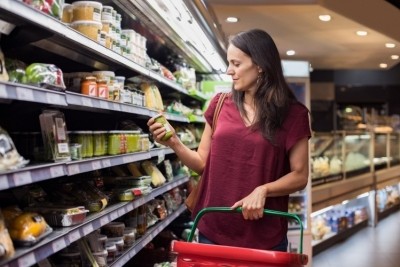Public confidence in food safety remains strong

The latest wave of the FSA’s Food and You 2 survey found that 90% of respondents were confident that the food they eat is safe.
Almost three quarters (73%) reported that they had confidence in the food supply chain, while most respondents (87%) reported confidence in farmers.
‘Challenging couple of years’
FSA chief executive Emily Miles said: “It’s interesting to see that public trust in food safety, authenticity and the food supply chain remains strong despite a challenging couple of years for the food industry.
“All parts of the food system have been forced to adapt to the impact of COVID-19 and food supply shortages, so it is noteworthy that the public remain confident the food they buy is safe and what it says it is.”
While most respondents had no concerns about the food they eat (80%), the most common among those that did were the amount of sugar in food (63%) and food waste (63%).
The survey also found that 84% of respondents checked the use-by date when buying food, while 82% said they checked the best-before date. More results from the survey can be found in the box below.
‘Maintain trust’
“Our priority will continue to be to keep food safe and maintain trust in our food system,” Miles added.
“As we move into a new year the FSA will continue to support the COVID recovery, while also looking at how we can contribute our insights and skills to the government’s agenda for a healthier and more sustainable food system.”
Meanwhile, up to a third of UK consumers are willing to try lab-grown meat and a quarter would try insects, according to research by the FSA.
Top of the list of consumers’ concerns surrounding alternative proteins such as lab-grown meats and insects was food safety. Assurances of the safety of these types of protein would encourage more consumers to try them, in the same way they have received assurances of the safety of plant-based proteins.
Food and You 2 survey results
Confidence in food safety, authenticity, and the food supply chain
- 90% reported that they were confident that the food they buy is safe to eat and 83% said they were confident that the information on food labels is accurate
- 73% reported that they had confidence in the food supply chain
- Respondents were more likely to report confidence in farmers (87%), shops and supermarkets (83%) than in take-aways (56%), and food delivery services (41%)
Concerns about food
- 80% had no concerns about the food they eat
- The most common prompted concerns were the amount of sugar in food (63%), and food waste (61%)
Food security
- Food security levels were comparable across England, Wales, and Northern Ireland. Over three quarters of respondents were food secure (i.e. had high or marginal food security) in England (85%), Wales (82%) and Northern Ireland (84%). Approximately 1 in 6 respondents were food insecure (i.e. had low or very low food security) in England (15%), Wales (18%) and Northern Ireland (16%)
Food shopping and labelling
- 83% reported that they often check the use-by or best before (82%) date when buying food
- 83% who go food shopping and take into consideration a person who has a food allergy or intolerance were confident that the information provided on food labelling allows them to identify foods that will cause a bad or unpleasant physical reaction
Online platforms
- 52% of respondents had ordered food or drink via on online ordering and delivery company and 30% had ordered via an online marketplace
- Fewer respondents had ordered food or drink via social media (14%) or a food sharing app (for example Olio, Too Good To Go) (8%)
Food-related behaviours and eating habits
- Eating habits had changed for most respondents in the last 12 months
- The most common changes related to what and where respondents ate (57% eaten out less, 55% eaten at home more, 50% cooked more at home, 39% eaten fewer takeaways)















